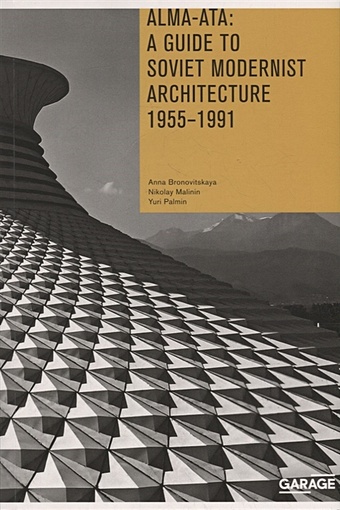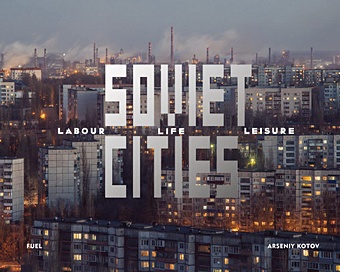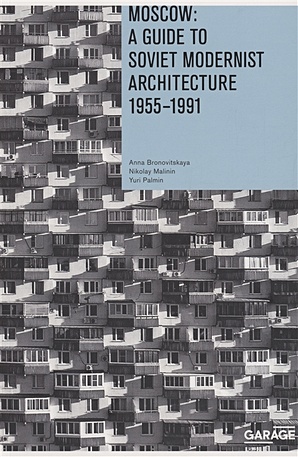soviet asia soviet modernist architecture in central asia

Soviet Asia: Soviet Modernist Architecture in Central Asia
Soviet Asia explores the Soviet modernist architecture of Central Asia. Italian photographers Roberto Conte and Stefano Perego crossed the former Soviet republics of Kazakhstan, Kyrgyzstan, Uzbekistan and Tajikistan, documenting buildings constructed from the 1950s until the fall of the USSR. The resulting images showcase the majestic, largely unknown, modernist buildings of the region. Museums, housing complexes, universities, circuses, ritual palaces―all were constructed using a composite aesthetic. Influenced by Persian and Islamic architecture, pattern and mosaic motifs articulated a connection with Central Asia. Gray concrete slabs were juxtaposed with colourful tiling and rectilinear shapes broken by ornate curved forms: the brutal designs normally associated with Soviet-era architecture were reconstructed with Eastern characteristics. Many of the buildings shown in Soviet Asia are recorded here for the first time, making this book an important document, as, despite the recent revival of interest in Brutalist and modernist architecture, a number of them remain under threat of demolition. The publication includes two contextual essays by Alessandro De Magistris and Marco Buttino.
4590 Руб.

Conte Roberto, Perego Stefano Soviet Asia. Soviet Modernist Architecture in Central Asia
A fantastic collection of Soviet Asian architecture, many photographed here for the first time Soviet Asia explores the Soviet modernist architecture of Central Asia. Italian photographers Roberto Conte and Stefano Perego crossed the former Soviet republics of Kazakhstan, Kyrgyzstan, Uzbekistan and Tajikistan, documenting buildings constructed from the 1950s until the fall of the USSR. The resulting images showcase the majestic, largely unknown, modernist buildings of the region. Museums, housing complexes, universities, circuses, ritual palaces - all were constructed using a composite aesthetic. Influenced by Persian and Islamic architecture, pattern and mosaic motifs articulated a connection with Central Asia. Grey concrete slabs were juxtaposed with colourful tiling and rectilinear shapes broken by ornate curved forms: the brutal designs normally associated with Soviet-era architecture were reconstructed with Eastern characteristics. Many of the buildings shown in Soviet Asia are recorded here for the first time, making this book an important document, as despite the recent revival of interest in Brutalist and Modernist architecture, a number of them remain under threat of demolition. The publication includes two contextual essays, one by Alessandro De Magistris (architect and History of Architecture professor, University of Milan, contributor to the book Vertical Moscow) and the other by Marco Buttino (Modern and Urban History professor, University of Turin, specializing in the history of social change in the USSR).
7394 Руб.

Bronovitskaya Anna, Malinin Nikolay, Palmin Yiri Moscow. A Guide to Soviet Modernist Architecture 1955-1991
Moscow: A Guide to Soviet Modernist Architecture 1955-1991 provides descriptions of almost 100 buildings from the most underrated period of Soviet architecture. This is the first guide to bring together the architecture made during the three decades between Khrushchev and Gorbachev, from the naive modernism of the "thaw" of the late 1950s through postmodernism. Buildings include the Palace of Youth, the Rossiya cinema, the Pioneer Palace, the Ostankino TV Tower, the TASS headquarters, the "golden brains" of the Academy of Sciences and less well-known structures such as the House of New Life and the Lenin Komsomol Automobile Plant Museum. The authors situate Moscow's postwar architecture within the historical and political context of the Soviet Union, while also referencing developments in international architecture of the period.
2571 Руб.

Bronovitskaya A., Malinin N. Alma-Ata: A Guide to Soviet Modernist Architecture. 1955-1991
Almaty became the capital of Soviet modernism after it ceased to be Alma-Ata, as its former rivals in terms of architecture—Yerevan and Kyiv, Tashkent and Minsk—gradually lost the heritage of the period dating from the 1960s through the 1980s. The losses in Almaty were not so serious. In 1997, the capital moved to Astana, which took on the architectural representation of independent Kazakhstan. Almaty remained a working museum of Soviet modernism, where one can see the first transparent library in the world, the first postmodernist skyscraper in the USSR, and a dam constructed using the most powerful controlled explosion in history. Authors Anna Bronovitskaya and Nikolay Malinin present the architecture of the city within the broad context of art, culture, and social and political history. This book is the second in a series launched in 2016 with a guidebook to Moscow's Soviet modernist architecture. "From the 1960s through the 1980s, Alma-Ata saw the emergence of a unique blend of international modernism, Soviet colonialism, and attempts by architects to enrich the language of modernism with Kazakh national traditions. Thanks to this book I discovered a completely unfamiliar stratum of postwar Soviet architecture." Vladimir Paperny UCLA
3249 Руб.

Bronovitskaya A., Malinin N. Alma-Ata: A Guide to Soviet Modernist Architecture. 1955-1991
Almaty became the capital of Soviet modernism after it ceased to be Alma-Ata, as its former rivals in terms of architecture—Yerevan and Kyiv, Tashkent and Minsk—gradually lost the heritage of the period dating from the 1960s through the 1980s. The losses in Almaty were not so serious. In 1997, the capital moved to Astana, which took on the architectural representation of independent Kazakhstan. Almaty remained a working museum of Soviet modernism, where one can see the first transparent library in the world, the first postmodernist skyscraper in the USSR, and a dam constructed using the most powerful controlled explosion in history. Authors Anna Bronovitskaya and Nikolay Malinin present the architecture of the city within the broad context of art, culture, and social and political history. This book is the second in a series launched in 2016 with a guidebook to Moscow's Soviet modernist architecture. "From the 1960s through the 1980s, Alma-Ata saw the emergence of a unique blend of international modernism, Soviet colonialism, and attempts by architects to enrich the language of modernism with Kazakh national traditions. Thanks to this book I discovered a completely unfamiliar stratum of postwar Soviet architecture." Vladimir Paperny UCLA
3249 Руб.

Kotov Arseny Soviet Cities. Labour, Life & Leisure
The Soviet dream of modernist architecture for all, portrayed on the brink of its erasure In recent years Russian cities have visibly changed. The architectural heritage of the Soviet period has not been fully acknowledged. As a result many unique modernist buildings have been destroyed or changed beyond recognition. Russian photographer Arseniy Kotov intends to document these buildings and their surroundings before they are lost forever. He likes to take pictures in winter, during the “blue hour,” which occurs immediately after sunset or just before sunrise. At this time, the warm yellow colors inside apartment-block windows contrast with the twilight gloom outside. To Kotov, this atmosphere reflects the Soviet period of his imagination. His impression of this time is unashamedly idealistic: he envisages a great civilization, built on a fair society, which hopes to explore nature and conquer space. From the Baikonur Cosmodrome in the desert steppes of Kazakhstan to the grim monolithic high-rise dormitory blocks of inner-city Volgograd, Kotov captures the essence of the post-Soviet world. “The USSR no longer exists and in these photographs we can see what remains?the most outstanding buildings and constructions, where Soviet people lived and how Soviet cities once looked: no decoration, no bright colors and no luxury, only bare concrete and powerful forms.” This superbly designed volume is the latest in Fuel's revelatory and inspiring series on Soviet-era architecture.
3842 Руб.

Мюррэй Д., Соррелл С. Soviet Cities: Labour, Life & Leisure
The Soviet dream of modernist architecture for all, portrayed on the brink of its erasureIn recent years Russian cities have visibly changed. The architectural heritage of the Soviet period has not been fully acknowledged. As a result many unique modernist buildings have been destroyed or changed beyond recognition.Russian photographer Arseniy Kotov intends to document these buildings and their surroundings before they are lost forever. He likes to take pictures in winter, during the “blue hour,” which occurs immediately after sunset or just before sunrise. At this time, the warm yellow colors inside apartment-block windows contrast with the twilight gloom outside. To Kotov, this atmosphere reflects the Soviet period of his imagination. His impression of this time is unashamedly idealistic: he envisages a great civilization, built on a fair society, which hopes to explore nature and conquer space.From the Baikonur Cosmodrome in the desert steppes of Kazakhstan to the grim monolithic high-rise dormitory blocks of inner-city Volgograd, Kotov captures the essence of the post-Soviet world. “The USSR no longer exists and in these photographs we can see what remains?the most outstanding buildings and constructions, where Soviet people lived and how Soviet cities once looked: no decoration, no bright colors and no luxury, only bare concrete and powerful forms.”This superbly designed volume is the latest in Fuel's revelatory and inspiring series on Soviet-era architecture.
4148 Руб.

Мюррэй Д., Соррелл С. Soviet Cities: Labour, Life & Leisure
The Soviet dream of modernist architecture for all, portrayed on the brink of its erasureIn recent years Russian cities have visibly changed. The architectural heritage of the Soviet period has not been fully acknowledged. As a result many unique modernist buildings have been destroyed or changed beyond recognition.Russian photographer Arseniy Kotov intends to document these buildings and their surroundings before they are lost forever. He likes to take pictures in winter, during the “blue hour,” which occurs immediately after sunset or just before sunrise. At this time, the warm yellow colors inside apartment-block windows contrast with the twilight gloom outside. To Kotov, this atmosphere reflects the Soviet period of his imagination. His impression of this time is unashamedly idealistic: he envisages a great civilization, built on a fair society, which hopes to explore nature and conquer space.From the Baikonur Cosmodrome in the desert steppes of Kazakhstan to the grim monolithic high-rise dormitory blocks of inner-city Volgograd, Kotov captures the essence of the post-Soviet world. “The USSR no longer exists and in these photographs we can see what remains?the most outstanding buildings and constructions, where Soviet people lived and how Soviet cities once looked: no decoration, no bright colors and no luxury, only bare concrete and powerful forms.”This superbly designed volume is the latest in Fuel's revelatory and inspiring series on Soviet-era architecture.
4148 Руб.

Bronovitskaya A., Malinin N., Palmin Y. Moscow: A guide to soviet modernist architecture 1955-1991
Moscow: A Guide to Soviet Modernist Architecture 1955-1991 provides descriptions of almost 100 buildings from the most underrated period of Soviet architecture. This is the first guide to bring together the architecture made during the three decades between Khrushchev and Gorbachev, from the naive modernism of the "thaw" of the late 1950s through postmodernism. Buildings include the Palace of Youth, the Rossiya cinema, the Pioneer Palace, the Ostankino TV Tower, the TASS headquarters, the "golden brains" of the Academy of Sciences and less well-known structures such as the House of New Life and the Lenin Komsomol Automobile Plant Museum. The authors situate Moscow's postwar architecture within the historical and political context of the Soviet Union, while also referencing developments in international architecture of the period.
1601 Руб.

Bronovitskaya A., Malinin N., Palmin Y. Moscow: A guide to soviet modernist architecture 1955-1991
Moscow: A Guide to Soviet Modernist Architecture 1955-1991 provides descriptions of almost 100 buildings from the most underrated period of Soviet architecture. This is the first guide to bring together the architecture made during the three decades between Khrushchev and Gorbachev, from the naive modernism of the "thaw" of the late 1950s through postmodernism. Buildings include the Palace of Youth, the Rossiya cinema, the Pioneer Palace, the Ostankino TV Tower, the TASS headquarters, the "golden brains" of the Academy of Sciences and less well-known structures such as the House of New Life and the Lenin Komsomol Automobile Plant Museum. The authors situate Moscow's postwar architecture within the historical and political context of the Soviet Union, while also referencing developments in international architecture of the period.
1601 Руб.

Krasnyanskaya Kristina, Semenov Alexander Soviet Design. From Constructivism To Modernism. 1920-1980
The Soviet Union has left a vast heritage in interior design that is largely unknown in the West. Other than architecture and graphic or product design, interior design from the Soviet era has not yet been thoroughly investigated. For the first time ever, this book offers a comprehensive survey of the country's interior design culture between revolutionary avant-garde and late Soviet modernism. Drawing on archives that were inaccessible until recently and featuring a wealth of previously unpublished material, it documents the achievements of seven decades in the former socialist empire. Soviet design is often discredited as massive, non-ergonomic and monotonous. Yet a remarkable variety of original styles have emerged behind the iron curtain. The 1920s were marked by bold exploration and experiments at Vkhutemas and by constructivism, rationalism, and suprematism. Early in Stalin's reign constructivism was heavily criticised and post-constructivism and Soviet neo-classicism appeared alongside what became known as 'agitational furniture', inspired by the regime's propaganda. The 1930s brought Soviet Art Deco and eventually Stalinist Empire, which has produced some of the Soviet Union's most iconic buildings. In the late 1950s, after Stalin's death, the last Soviet 'big style' originated modernist and functionalist furniture, mass-produced to fit the small apartments in the Khrushchyovka multi-unit housing developments that were built in cities on a large scale. The 1960s mark the Golden Age of Soviet interior design, showing again influences by the early Soviet Avant-Garde and the Bauhaus, while most of the visionary work of a new generation of designers in the 1970s and 1980s remained unrealised.
19114 Руб.

Sobecka (Zupagrafika) Martyna Concrete Siberia. Soviet Landscapes of the Far North
A photographic insight into the Soviet-era architecture of one of the most extreme, little-known and vast territories on Earth. From the Ural Mountains to the Arctic Circle, Concrete Siberia by Zupagrafika contains over 100 photographs exploring the post-war modernist districts of Siberia's urban centres and the quotidian lives of their inhabitants.
6522 Руб.

Herwig Christopher, Hatherley Owen Soviet Metro Stations
Stunning photographs of Soviet Metro Stations from across the former states of the USSR and Russia itself, many of which have never previously been documented For us, said Nikita Khrushchev in his memoirs, `there was something supernatural about the Metro'. Visiting any of the dozen or so Metro networks built across the Soviet Union between the 1930s and 1980s, it is easy to see why. Rather than the straightforward systems of London, Paris or New York, these networks were used as a propaganda artwork - a fusion of sculpture, architecture and art, combining Byzantine, medieval, baroque and Constructivist ideas and infusing them with the notion that Communism would mean a `communal luxury' for all. Today these astonishing spaces remain the closest realisation of a Soviet utopia. Following his best-selling quest for Soviet Bus Stops, Christopher Herwig has completed a subterranean expedition - photographing the stations of each Metro network of the former USSR. From extreme marble and chandelier opulence to brutal futuristic minimalist glory, Soviet Metro Stations documents this wealth of diverse architecture. Along the way Herwig captures individual elements that make up this singular Soviet experience: neon, concrete, escalators, signage, mosaics and relief sculptures all combine build an unforgettably vivid map of the Soviet Metro. The photographs are introduced by leading architecture, politics and culture author and journalist Owen Hatherley.
7394 Руб.

Bortsova Varia Soviet Visuals
A bizarrely funny, nostalgic collection of images of life under the Soviet Union - from the Instagram and Twitter accounts that have amassed a following of more than 1 million. Welcome to the USSR. Marvel at the wonders of the space race! Delight in the many fine delicacies of food and drink! Revel in the fine opportunities for work and play! Soviet Visuals invites you back in time into the strangely captivating world of the Soviet Union-through a unique collection of photography, architecture, propaganda art, advertising, design, and culture from behind the Iron Culture that will fascinate, amuse, and maybe even teach a thing or two.
3033 Руб.

Herwig Christopher Soviet Bus Stops
Photographer Christopher Herwig first noticed the unusual architecture of Soviet-era bus stops during a 2002 long-distance bike ride from London to St. Petersburg. Challenging himself to take one good photograph every hour, Herwig began to notice surprisingly designed bus stops on otherwise deserted stretches of road. Twelve years later, Herwig had covered more than 18,000 miles in 14 countries of the former Soviet Union, traveling by car, bike, bus and taxi to hunt down and document these bus stops. The local bus stop proved to be fertile ground for local artistic experimentation in the Soviet period, and was built seemingly without design restrictions or budgetary concerns. The result is an astonishing variety of styles and types across the region, from the strictest Brutalism to exuberant whimsy. Soviet Bus Stops is the most comprehensive and diverse collection of Soviet bus stop design ever assembled, including examples from Kazakhstan, Turkmenistan, Uzbekistan, Kyrgyzstan, Tajikistan, Ukraine, Moldova, Armenia, Abkhazia, Georgia, Lithuania, Latvia, Belarus and Estonia. Originally published in a quickly sold-out limited edition, Soviet Bus Stops, named one of the best photobooks of 2014 by Martin Parr, is now available in a highly anticipated, expanded smaller-format trade edition.
7394 Руб.

Philipp Meuser. Architectural guide: Astana
Amid the endless plains of Kazakhstan, an extraordinary architectural experiment has arisen: Astana. Formerly an outpost of the Tsarist Empire in the barren steppe, the location had developed into a typical Soviet provincial town. However, both internationally renowned and local architects are now designing spectacular and unique buildings in this dynamic city. Furthermore, Astana will host the Expo 2017 which will take place only twenty years after the city was built in the steppe alongside the old centre, based on a masterplan by Kisho Kurokawa. This exhibition is meant to finally promote the Kazakh capital to the premier league of global metropolises. The book documents eighty diverse buildings and projects, examining the contradictory nature at play within oriental traditions, western models and Soviet influences. Therefore, this publication represents a critical analysis of Central Eurasian architecture at the beginning of the 21st century.
1270 Руб.